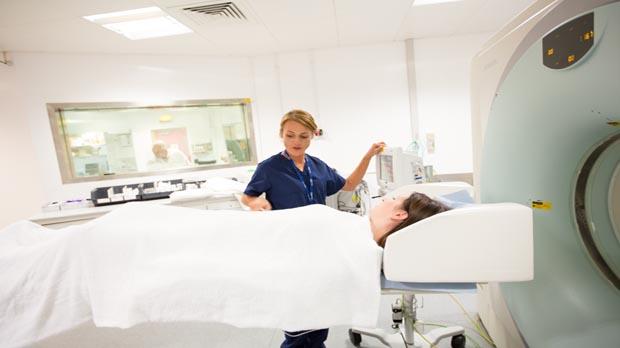
Around 1 in 5 people diagnosed with cancer in the UK take part in a clinical trial.
This trial looked at adding venetoclax to bortezomib and dexamethasone for myeloma. It was for people whose myeloma had come back or whose treatment had stopped working.
This trial was open for people to join between 2016 and 2017. The team published the results in 2020.
Doctors are always looking for ways to improve treatment for people with myeloma. In this trial they looked at a drug called venetoclax. It was a new drug when this trial was done.
Venetoclax is a type of  called a BCL2 inhibitor (blocker). BCL2 is a protein that cancer cells make too much of. It prevents the myeloma cells from dying, so they continue to grow.
called a BCL2 inhibitor (blocker). BCL2 is a protein that cancer cells make too much of. It prevents the myeloma cells from dying, so they continue to grow.
Venetoclax blocks the BCL2 protein found in myeloma cells. This causes these cells to die. Researchers thought it might be a useful treatment for myeloma but they wanted to find out for sure.
Bortezomib and dexamethasone are 2 drugs that doctors already used to treat myeloma.
In this trial, some people had bortezomib, dexamethasone and venetoclax. And some people had bortezomib, dexamethasone and a dummy drug ( ).
).
The aims of the trial were to:
This trial showed that venetoclax might be a useful treatment for some people whose myeloma has come back. It might also be useful if treatment has stopped working.
Trial design
This was an international phase 3 trial. 291 people took part from around the world.
There were 2 treatment groups. For every 2 people who had venetoclax, 1 person had the dummy drug. The people taking part were put into a treatment group at random:
Neither the people taking part nor their doctor knew which group they were in. This is called a double blind trial.
Everyone had treatment for as long as it was working and the side effects weren’t too bad.
Results
The trial team looked at how well treatment worked. They followed everyone for about 18 months.
A group of specialist doctors who weren’t involved in running the trial also reviewed the results. This group is called an independent review committee (IRC).
This committee looked at how long people stayed without signs of the myeloma getting worse. Researchers call this progression free survival or PFS. They found this was about:
The team also looked at the total number of people whose myeloma had either gone away completely or got better.
They found this was:
They then looked at whose myeloma had gone away completely. And at who had no sign of myeloma cells in their blood or bone marrow after treatment. This is called being minimal residual disease (MRD) negative. The team found this:
The team also looked at how long people lived. This is called overall survival. The team haven’t done the final analysis yet but we hope to update this when it becomes available. The team did find more people who had venetoclax had died within 30 days of having the last dose of trial treatment. This was:
The higher number of deaths in people treated with venetoclax was mainly due to an increased rate of infections. We have more information about this in the side effects section below. The trial team could look at whether there were particular groups of people that might be more prone to this side effect.
Results for the subgroups
The trial team looked to see if certain groups of people in the trial benefitted more from treatment than others. They identified 2 groups. These included people who had:
 ) in the chromosome of the myeloma cells called t (11:14)
) in the chromosome of the myeloma cells called t (11:14)The team looked at the total number of people whose myeloma had either gone away completely or got better.
In the t (11;14) group this was:
In the high BCL2 group this was:
Based on these results the team say that venetoclax worked best for these 2 groups of people in this trial.
Side effects
Most people had at least one side effect from treatment. The trial team looked at who had bad to severe side effects of treatment.
The more severe side effects of treatment were:
 . These fight infection.
. These fight infection. 
People who had venetoclax had more serious problems with:
The rate of infections was similar across the 2 treatment groups. Most recovered but 8 people who had venetoclax developed a serious infection and they died.
Conclusion
The trial team found that adding venetoclax to bortezomib and dexamethasone might be promising for some people who have myeloma. But it didn’t work for everyone and some of the side effects were worse.
Where this information comes from
We have based this summary on information from the research team. The information they sent us has been reviewed by independent specialists ( ) and published in a medical journal. The figures we quote above were provided by the trial team who did the research. We have not analysed the data ourselves.
) and published in a medical journal. The figures we quote above were provided by the trial team who did the research. We have not analysed the data ourselves.
Please note: In order to join a trial you will need to discuss it with your doctor, unless otherwise specified.
Dr Rakesh Popat
AbbVie
Genentech
If you have questions about the trial please contact our cancer information nurses
Freephone 0808 800 4040

Around 1 in 5 people diagnosed with cancer in the UK take part in a clinical trial.